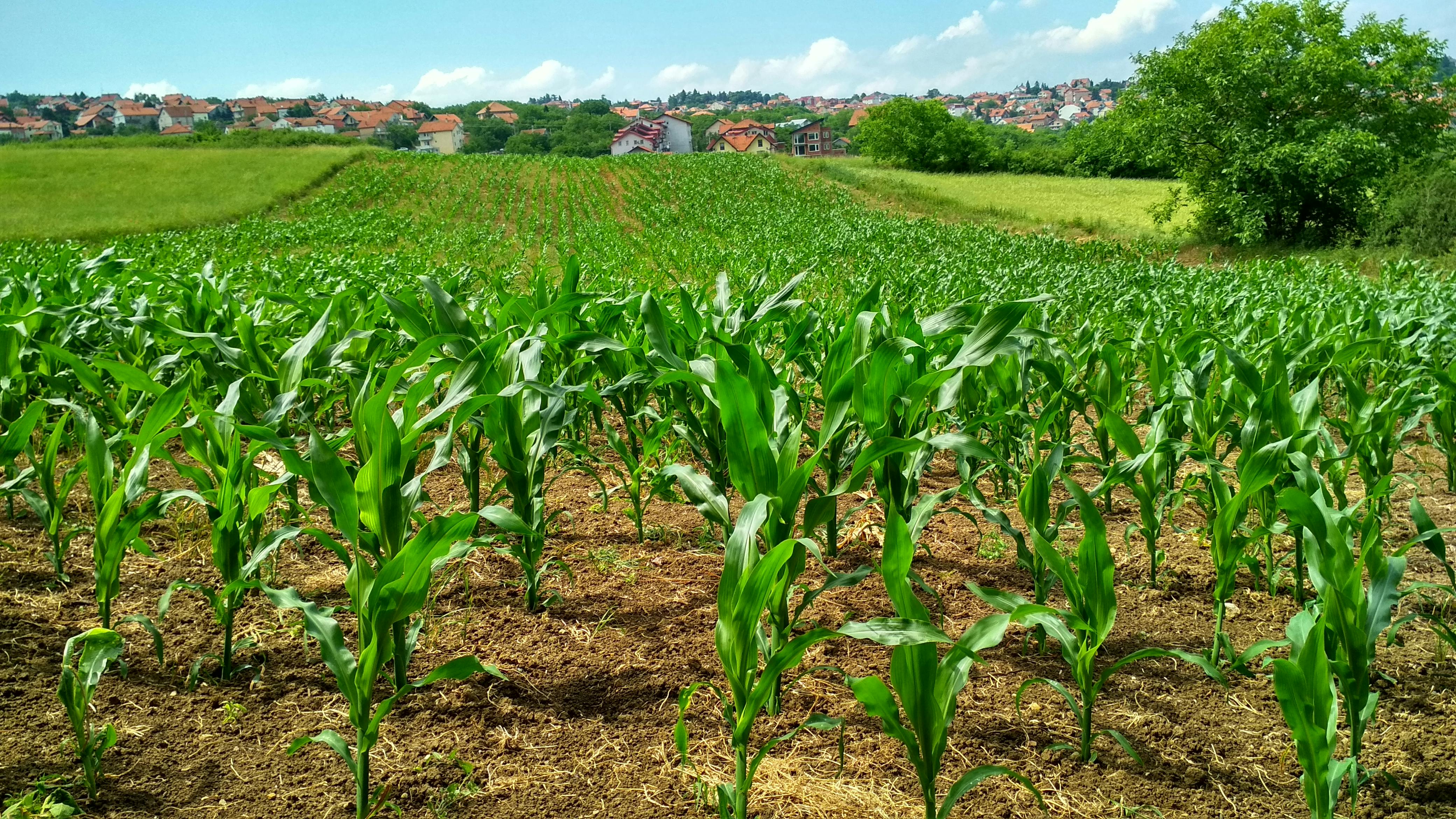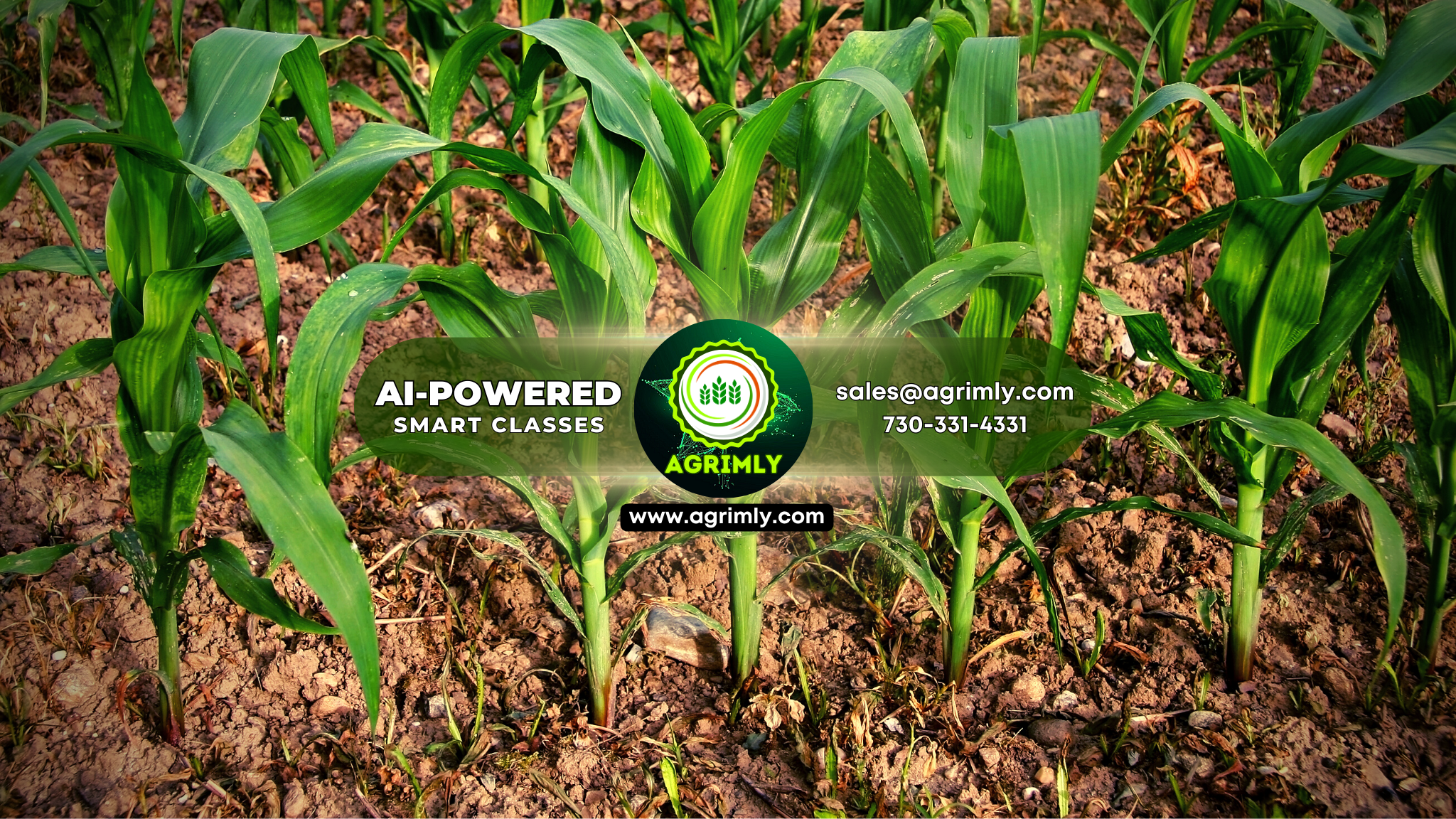A crop is the annual or season's yield of any plant that is grown in significant quantities to be harvested as food, fodder, fuel or for any other economic purpose.
The crop plants, derived from wild progenitors through selection and breeding, have characteristics of particular agronomic value as against survival characteristics in the wild progenitors.
The value of a crop is dependent on its ability to produce a larger amount of useful material than its wild progenitor.
While the wild or uncultivated plants require environmental conditions that will ensure successful regeneration, the crop plant or cultigen needs those which will allow a high probability of a satisfactory and relatively consistent yield of the harvestable parts for which it has been specifically cultivated.
In the highly domesticated species, the symbiotic relationship with human beings is such that a few would survive in the wild without his protection.
From agronomic point of view, crops are classified as:
Cereals or grain crops : This group includes rice, wheat, barley, oats, pearl millet, finger millet, foxtail millet, sorghum, maize etc.
Legumes : It includes pulse crops such as gram, pigeonpea, greengram, blackgram, peas, cowpea, horse gram, lentil, etc.
Oilseeds crops : Groundnut, mustard, sunflower, sesame, safflower, castor, rapeseed, etc. constitute this group.
Fiber crops : This group includes cotton, flax, jute, mesta and sunhemp.
Forage crops : This group mainly include grasses and legumes such as sorghum, elephant grass, guinea grass, berseem, lucerne and other pulse crops.
Sugar crops : The two important crops are sugarcane and sugarbeet.
Root crops : Sweet potato and cassava are significant in this group.
Tuber crops : Potato and elephant yam are important
Drug crops : Tobacco is common crop of this group in India.
Plantation crops : Tea, coffee and coconut are important.
Condiments and spices : Important crops are cardamom, pepper, chillies, turmeric and ginger.
Medicinal and aromatic plants : This group is again subdivided into two--medicinal crops such as cinchona, isabgol, opium poppy, senna, belladonna, rauwolfia, licorice and aromatic plants such as lemon grass, citronella grass, palmarosa, Japanese mint, peppermint, rose, geranium, jasmine, henna, etc.
Another simple classification could be :
Field crops such as cereals, millets and pulses.
Plantation crops such as tea, coffee, rubber, coconut, etc.
Commercial crops include oilseed crops, sugar crops, fibre crops and tobacco.
Horticultural crops such as fruit, vegetable and ornamentals.
Forage and grasses like sorghum, maize, elephant grass, guinea grass and other pulse сторѕ.
Condiments and spices which includes cardamom, pepper, chillies, ginger and turmeric.
Medicinal and aromatic plants as indicated under agronomic classification.
A more rational grouping of universal applicability is that on the basis of harvested part: grain cereals, seed legumes, roots and tubers, vegetables and fruits.
Cereals derived from Ceres, the Goddess of Grain, are the most important crops in terms of area occupied and production.
Cereals comprises the small grains (wheat, rice, barley, rye, oats) and large or coarse grains (maize, sorghum, millet).
Collectively, these provide over 50 percent of the world's energy and protein needs and occupy two-thirds of the cultivated land. Importance of cereals is due to their relatively high nutritive value (10-12 percent protein), case of cultivation, storage and transport, wide environmental adaptability and their early maturity
After cereals, seed legumes are the most widely cultivated crops in both temperate and tropical latitudes.
They have three common features : they produce seeds in fruits (pods), that is, the legume which has given its name to the group, they produce hard and relatively large seeds (pulses) with protein as main storage compound and nearly all can fix atmospheric nitrogen in their roots.
Three most important seed legume crops producing food are soybean, field bean and groundnut.
In contrast to cereals, legumes are rich in lysine, but low in sulphur containing compounds.
The third group of food crops are the roots and tubers, the bulky organs with more than 75 per cent water that limits storage. Of these, potato is a basic item of diet in all the temperate countries. Sweet potato and cassava are the most widespread of tropical tubers.
The other food crop in the top twenty is sugarcane, the harvested part being the stem for its sugar content. Sugarbeet, a new crop is well adapted to environmental conditions for sugar extraction comparable to those of potato. The industrial crop that rivals the major food crops in extent is cotton, the most important fiber producing plant. Others of this group include flax, hemp and sisal. Plant sources of oil and foodstuff, other than those included under top twenty include safflower, castor, sunflower, linseed, sesame, mustard and rapeseed. Coconut and oil palm are large scale commercial production of oils.
In agriculture, cultivation is the process of growing plants (crops) on arable land. It is usually associated with large scale agriculture, as opposed to small scale gardening. Minimum requirements for crop cultivation are soil, water and seed. Cultivation involves seed sowing/planting seedlings in appropriate season. In the process of cultivation, a farmer is often required to prepare the land (tillage) for sowing/planting, apply manures/fertilisers, control weeds, crop pests and diseases, irrigate the field and ultimately harvest the crop.
Cultivation is management of both the crop and the environment in which the crop is grown.
Crops and cultivars selection aims at highest yield and quality under a given set of environmental conditions.
Tillage, water, nutrient and weed management and plant protection aims at minimising biophysical constraints and to produce the environment that will allow the crop to realise its productive potential. The primary management practises in cultivation involves :
Selection of that crop and cultivar best adapted to ensure a high probability of a satisfactory yield of the required product.
Propagation through optimum tillage, nutrient application and water management to ensure ideal conditions for sowing and feeding the crop.
Protection from competition for the primary resources by weeds and direct or indirect reduction in yield potential by pests and diseases.
Crop productivity or yield refers to the utilisable part of the plant, which is not the same in every crop, is always less than the total biological production.
Crop yield is a function of more complex set of interacting variables than in primary biological production in unmanaged ecosystem. These include:
i) The environmental conditions under which the crop is grown
ii) The yield potential of particular cultivar.
iiii) The crop and the environment management for minimising environmental constraints leading to highest yield potential of the crops.
Crop yield is highly variable both spatially and temporarily due to two main causes: the negative biological factors (weeds, pests, and pathogens) and weather (light, temperature and soil moisture).
Agriculture in tropics is characterised by low intensity and near subsistence farming systems. The input levels or high yielding cultivars are correspondingly very low. Subsequently, crop yield is more dependent on natural environmental conditions than in more intensively farmed areas of the world.
Five major determinants of yield are :
i) The yield potential of cultivars used.
ii) The available soil moisture during crop period.
iii) The productive potential of the soil.
iv) The level of weed competition.
v) The intensity of pest and disease infestation



